Ojibway healer, storyteller, and author Ron Geyshick
(Image from Judith Doyle’s film, Lac La Croix)
Jorge Barrera, APTN National News
Three Day Road author Joseph Boyden is facing questions over ‘intimate’ similarities found in a passage from one of his short stories and a piece published years earlier by an Ojibway healer and storyteller named Ron Geyshick.
Boyden claims the passage found in his short story Bearwalker, which was written in 1997 and is about a medicine man receiving powers, was told to him by an “old man” named Xavier Bird in Fort Albany First Nation, which sits along the Albany River just before it flows into James Bay along Ontario’s northeastern coast. The author also said he heard the story told in nearby Moosonee, Ont., while he was in Mushkegowuk Cree territory in the 1990s gathering stories for a project called Shabotowan.
Bearwalker appeared in Boyden’s book of short stories, Born With a Tooth, first published in 2001.
See Jorge Barrera’s story from APTN National News
A story with similar words, phrasing, structure and narrative arc was published in a 1989 book by Ron Geyshick and Judith Doyle titled, Te Bwe Win. Geyshick’s story in the book was called, Inside My Heart. Te Bwe Win was a compilation of Geyshick’s personal stories and those told to him by relatives and Elders from his community of Lac La Croix, an Ojibway First Nation which sits about 200 kilometres west of Thunder Bay, along the Canada-U.S. border. Quetico Provincial Park sits to the north of the community and Superior National Forest in Minnesota to its south.
Chuck Bourgeois, a Native studies doctoral student at the University of Manitoba, first noticed the similarities between the two stories several years ago after he read Bearwalker in Boyden’s Born with a Tooth. Bourgeois was familiar with Te Bwe Win which he previously read at the suggestion of one of Geyshick’s relatives who he met in Thunder Bay during the early 2000s.
Ron Geyshick, images from Judith Doyle’s film, Lac La Croix
Over the holidays, while the controversy over Boyden’s claimed Indigenous identity flared, Bourgeois took a second look at the two texts and studied them side by side. He then wrote an analysis sent to APTN National News which raised concerns about the two pieces and their mirrored details.
“I actually took the two books out and they are almost identical,” said Bourgeois, in an interview. “It hit me so hard… when I kind of noticed it the first time I wasn’t sure, but when I put those two books together, someone had to know about this.”
APTN shared Bourgeois’ findings with Judith Doyle, a Toronto filmmaker and academic who helped Geyshick compile and groom his stories for publishing.
“When I opened up the text and read the section of the story by Boyden and the story by Ron, Inside My Heart, the first reaction I had was just shocked and stunned. The stories formally share intimate structural details, they begin and end exactly the same way, the turns of phrase, the cadence, the description, the characters, such symmetry between the two passages,” said Doyle, in an interview. “There is embellishment in Boyden’s story, but the architecture in Boyden’s story is very, very similar.”
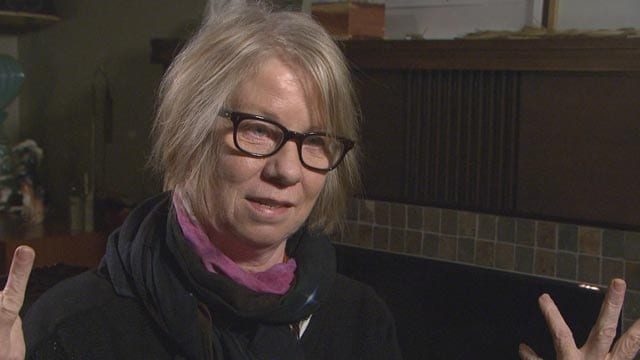
Doyle, a professor at OCAD University, an art and design institution in Toronto, met Geyshick in the 1980s when she travelled to Lac La Croix to film a documentary. Geyshick was teaching traditional stories in the local school. The community at the time was in the midst of a struggle with provincial authorities over the use of small motorboats in Quetico park. The community, which was only accessible by float plane during that era, depended on the boats as a small source of vital revenue from tourists seeking fishing guides.
Geyshick never attended Indian residential school. His parents hid him out on the trap line. His father was the community’s traditional teacher and healer who transferred the role to his son.
“(Geyshick) had written down some of these stories as a way to remember his teachings,” said Doyle, in an interview. “He gave it a lot of very careful thought and decided it was important that these stories be set down so that young people in the community, in the future, would have these stories.”
Geyshick, who died in 1996, set to work writing drafts of his stories by hand on Hilroy notebooks he procured from the school from about 1985 to 1988. Doyle helped smooth the stories out for publishing.
“It was very important to us that we didn’t change the form of these stories,” said Doyle.
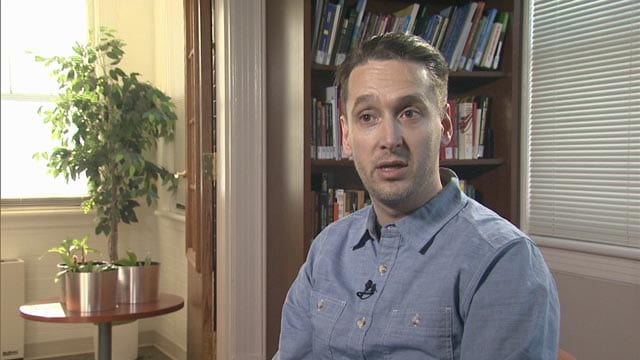
Te Bwe Win was published by Summerhill Press in conjunction with Impulse Editions, an artist-run magazine.
“It was a very small edition and it was well received,” said Doyle.
The book was purchased by several public libraries throughout Ontario’s Treaty 3 territory which is in the northwestern region of the province, said Doyle. The book was also included in some school curriculums and in the Oxford anthology of Native Canadian literature, she said.
Doyle believes the similarities between Geyshick’s story and the passage found in Boyden’s Bearwalker are “beyond coincidence” and need more probing.
“My gut reaction to reading the story… my immediate reaction was, ‘These two things are identical in so many ways, it can’t be a coincidence,’” said Doyle. “Now, after reading the response from Joseph Boyden I still am of the opinion that this needs to be really thoroughly investigated…. I believe that stories contain markers.”
Click on the chart highlighting similarities between passages in Joseph Boyden’s Bearwalker and Ron Geyshick’s story, Inside My Heart.
Chart by Anishinaabe author Kateri Akiwenzie-Damm
In a statement sent to APTN, Boyden suggests the stories are similar because they are a type of “modern parable” circulating from Ojibway territory along the Minnesota-Ontario border and across Ontario to the province’s James Bay coast in Swampy Cree country.
“I have always been fascinated by the oral stories that travel through communities. I first encountered this one in Fort Albany in the mid-1990s, hearing it from an old man named Xavier Bird, who spoke to me about the Lord and his helpers appearing as old-fashioned preachers visiting a sick man, barred in his room and giving him the gift of sight,” said Boyden, in the statement sent to APTN. “I heard the story again in Moosonee, the place where I first witnessed people keeping their doors shut with butter knives, once again the details were the same….I saw it as a type of modern parable, a Christian story, filtered through the distinct local experience and lens.”
Xavier Bird was born in the bush between what is now the northern Ontario ghost town reserve of Winisk and Fort Severn near the Hudson Bay coast, according to his younger brother Louis Bird.

Xavier Bird was so strong he could catch a beaver with is bare hands, said Louis Bird. He would use rocks to block the beaver’s house, smash the top and wait for the beaver to emerge, he said.
“The beaver comes from the water in front of you, head first, you put your hand under, grab it by his front paw and throw him over,” said Louis Bird. “That is a skill he knows.”
Louis Bird was 13 years-old when he started to learn the ways of the bush from his older brother who also trapped lynx and otter. Xavier Bird taught him how to make snowshoes from tamarack wood and rawhide from moose. Xavier Bird would use a carving knife honed from the steel of the traps.
“He shaped it and filed it down,” said Louis Bird.
And Xavier Bird, who was left-handed, could walk forever through the bush, he said.
“He was my teacher,” said Louis Bird. “He taught me how to live in the bush, he taught me how to hunt and trap.”
Xavier Bird only attended St. Anne’s Residential school for one year in 1939, married a woman named Louise from Fort Albany First Nation and worked for a short time in the 1950s at a Mid-Canada Line radar station, first as a construction worker, then as a janitor, according to Louis Bird. He only knew a little English, just enough to get by.
Xavier Bird, who died in 1996, last lived in Fort Albany, along Ontario’s James Bay coast, in a house near the school where author Joseph Boyden taught in the 1990s, said Louis Bird.
Louis Bird said the story Boyden claims is a common “modern parable” throughout the region is actually unknown in Mushkegowuk Cree territory, which includes Fort Albany and Moosonee. Louis Bird is the preeminent storyteller and story-holder for the region. He grew up listening to the old stories from his grandmother. When she died, he realized these stories would die with her and all the Elders who held them unless they were preserved. So, he began to collect and then record these stories beginning in the 1960s.
Louis Bird doesn’t believe his brother told Joseph Boyden the story about the medicine man who was sick on his couch in a room bolted-shut by knives.
“You say that Joseph said Xavier told him about the story about the sick man and the two helpers of what, who? That is something that is very strange for me. The kind of stories we tell has nothing to do with the Lord, helpers, black suited men with white ties, white shirt, there is no such thing that exists in our brain,” said Louis Bird. “If he actually said he spoke to him, I don’t know about that, but I know one thing, my brother doesn’t tell a story like I do, when he wants to speak about something, he speaks about only his hunting and trapping skills and also some of the things he does in everyday living. So, that subject you talk about, about the two helpers of God or whatever it is with the black suit and white tie, my brother doesn’t associate with any such thing.”

Louis Bird and Boyden met in 2010. He said Boyden asked him what he thought about the use of Xavier Bird’s name in the novel Three Day Road (Boyden also used Xavier Bird’s name for a character in Bearwalker). Xavier Bird is a main character in the novel, which was nominated for a Governor General’s award and won the McNally Robinson Aboriginal Book of the Year Award.
“He was nervous a little bit. He wanted to ask me a question and the thing he asked me was whether it was okay that he used my brother’s name in the book, and I said, ‘What do you mean?’ And he said, ‘I used your brother’s name instead of the real people.’ My brother is gone now and can’t say much about that,” said Louis Bird. “I think it’s not right to do that. He picked my brother as one of the names he uses…without asking him.”
APTN contacted Boyden again seeking a response to Louis Bird’s rebuttal of the author’s claim he was told the story of the medicine man receiving powers from Xavier Bird and that the story was also told around Moosonee.
This time, Boyden’s lawyer sent APTN a letter denying the author ever “plagiarized” anything in his career.
“Mr. Boyden has a lifetime of published work, massive in size and circulation, none of which he has plagiarized,” said the letter, sent by Boyden’s Kitchener, Ont., lawyer Brian Kelly. “If Joseph Boyden’s aforementioned statement was not clear enough for you, we hereby advise on his behalf that Mr. Boyden has plagiarized nothing in his book, Born with a Tooth nor any other of his works. Your allegations against Mr. Boyden are neither fair nor accurate and can only be characterized as a malicious attack on our client. The speculative and reckless allegations thus far made by you are defamatory of his person and actionable.”
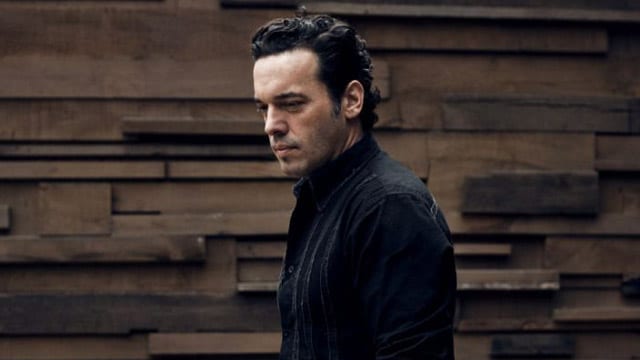
Warren Cariou, who holds the Canada Research Chair in Narrative, Community and Indigenous Cultures at the University of Manitoba, said orally transmitted stories do not usually share the same phrasing and the types of “granular” details shared by Geyshick’s and Boyden’s pieces.
“The structure of a story does get transmitted very regularly, especially in Indigenous traditions. The plot of the story, the actions and often the place of the story, that can get transmitted readily,” said Cariou. “The details of phrasing, those are not very often transmitted, so seeing the same phrase used and very specific use of specific words, that is very unusual for that to happen in transmission of oral stories. There are lots of stories that are similar in Ojibway and Cree traditions, but it’s not the wording that’s similar, it’s the actions and the characters.”
Cariou said he has many questions about how the two texts could be so similar and does not believe it to be the result of a modern parable circulating between the two communities.
“I have never seen that story in the Cree tradition. I have never seen it in the Ojibway tradition. For me, I have only encountered that story in Ron Geyshick’s book,” he said.
APTN repeatedly offered Boyden an opportunity to respond to these questions on camera. The author is now communicating with the network only through his lawyer who simply referred to Boyden’s prior statement referred to in this article.
The full text of passages in question from Joseph Boyden’s Bearwalker
The full text of passages in question from Ron Geyshick’s Inside My Heart



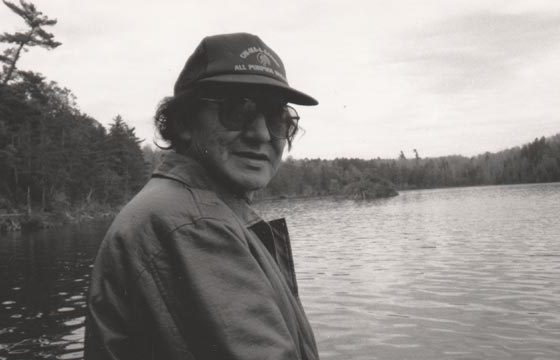


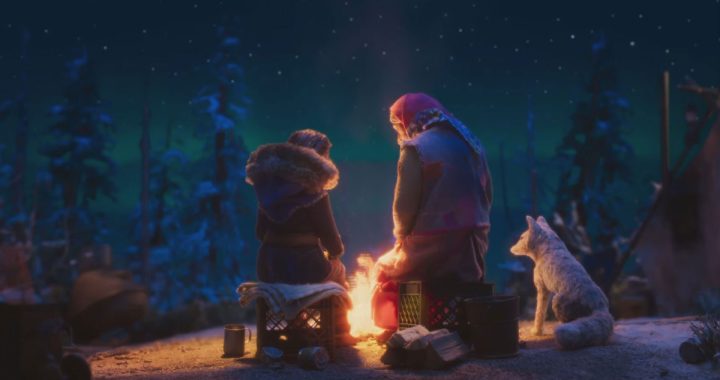


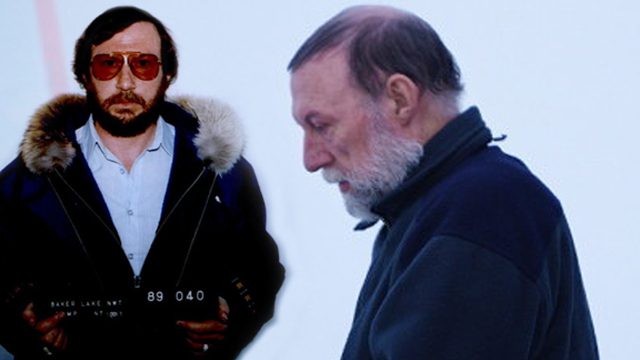



A big thanks to Jorge Barrera and APTN for their factual reporting on Boyden-gate. It always seemed to me that it was just certain facts that should be made known were being reported and it was left to the reader to decide for themselves. Can’t see how that could be considered an “attack”. Listen to the Feb 27/17 Boyden interview on CBC Radio’s As It Happens, such twisting in the wind. Only helped me form my opinion that someone is misrepresenting himself. And that plagiarized story sounds to me like one man’s experience or story-telling, not a traditional story, btw and IMO. Never heard of a traditional story with guys dressed in western-style suits! Just come clean and start over!
Joseph Boyden stepped up right after Kevin Annett was outed.
I watched while many followed down one rabbit hole to another.
Why as indigenous people do we allow people into our circles to help us?? to speak for us??
There’s obviously something in it for them. …MONEY.. yours, your childrens and grandchildrens ..FAME.. do you hear my tiny fiddle playing…
and then I read that Joseph Boyden is worth somewhere around 12 million dollars..did he thankyou.
That money could /should belong to a real indigenous author who could also do openings/closings like Richard Wagamese or Lee Maracle to name my favorites.. OR are we letting pretenders do that too..
Is it because as a non-aboriginal pretending to be..they clean up better than we do..honestly I prefer the smell of fire..tobacco, sweetgrass and sage over OLD (boy) SPICE.. Anyday..
My Elder has always told me to go ahead and read everything I can get my hands on BUT know who the writer is..who his people are..who claims him …and I’ ll add the new one I love…what color are your beads…
Joseph Boyden should have to return anything he received from Indspire and “someone else” (I could use one of those pretenders right now ) should get that Order of Canada revoked..he’ really making a mockery of both organizations..
A wannabe alleged billionth breed who thinks his white entitlements transfers to indigenous ancestry….like the metis, bill c’s and non status….his claims are fictional and are allowed to occur because Canada’s colonialistic policies exist to further dilute, weaken and erode our inherent rights
the book ron n Judith published were real stories from a well respected medicine man, gilbert oshawee. when gilbert oshawee passed rons father took the book for safe keeping. ron wasn’t suppose to publish giberts stories, but he did anyways for public gain n financial gain. he also took old ojibwe games from gilbert, ron gave the games to his family members. let it be known the stories ron n Judith published were not rons stories. the family members of gilbert oshawee want thebook returned but rons family is refusing to give back the book n old ojibwe games.
Wow. I don’t think there is doubt about the true character of Joseph Boyden anymore.
A person who would steal stories and call them his own is also the sort of person who would claim to be descended from a half dozen indigenous tribes without a shred of proof.
Is Boyden really the kind of professor you would want teaching your children?
And now he’s hiding behind his lawyer. Maybe he should be the new Milo Yiannopoulos at Bitefart Media.
I applaud APTN & Jorge Barrera for doing the kind of journalism that deserves to be called investigative.
Methinks the Boyden saga is far from over.
No journalist would ever place “plagiarism” in quotations. This is an opinion piece, not journalism. If it was intended as journalism, you have much to learn about the trade.
This theft of stories- much like identity- go hand in hand. Our stories hold knowledge and power on many levels. Thats why we have protocols to honour and acknowledge them. Its not surprising if Boyden took stories and claimed them as his own- many were speaking to this issue in December.
Excellent journalism.
I think there will be more instances of plagiarism found in Boyden’s work, if someone starts digging. I wondered when The Orenda came out if some of the scenes were plagiarized from the novel The Son. The torture scenes didn’t seem historically accurate, and sounded very much like the scenes in The Son, a novel about the Comanche.
From The Orenda Book Reviews on Linkis:
“An extraordinary work that sets the traditional cowboy and Indian story on its head. One of those rare books that manages to be both a work of art and a page-turner, The Orenda is destined to be a classic.”
—Philipp Meyer, New York Times bestselling author of The Son
http://linkis.com/com/d0ayV
So I think this suggestion may not hold up.